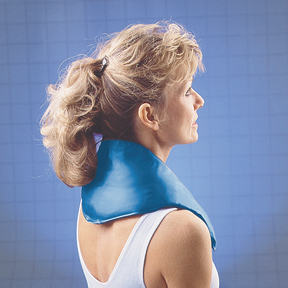Cold or Ice (CRYOTHREAPY) Therapy

The application of cold or cryotherapy following an acute injury (or post-surgery) is used to reduce the physiological responses to tissue damage – bleeding, an inflammatory response, and muscle cell activity. The local application of cold provides these effects that help reduce these physiological responses and protect tissues:
- Vasoconstriction to reduce blood flow and decreased microvascular permeability thereby limiting bleeding and tissue edema (swelling) at that site of injury as well as residual or nearby tissues
- Decreased local cellular and tissue metabolism, and therefore a reduced need for oxygen yielding a reduced inflammatory response, which is also associated with pain reduction and muscle guarding
- Decreased intra-articular temperature (with long-term application) reducing the metabolism of articular tissues and the deleterious effects of heightened cartilage-degrading enzymes
It is recommended that ice/cold be applied to an injury as soon as possible after the traumatic event with studies showing that the sooner cryotherapy is applied, the more beneficial the inhibitory effect on the physiological responses. The immersion of an extremity that has sustained a small burn in cool water or the application of a towel emersed in cold water and applied to the burned body part is also helpful in reducing the tissue degradation while providing a analgesic effect.
Cold therapy has also been used effectively on chronic painful conditions such as osteoarthritis, rheumatoid arthritis, adhesive capsulitis (Frozen Shoulder), and even tendinitis and epicondylitis.
Contraindications or Precautions to the Use of Cryotherapy
- A condition of Raynaud’s phenomenon: In some individuals this condition is triggered by exposure to cold and results in excessive vasoconstriction, increased pain, and a dramatic reduction in finger dexterity
- Cold urticaria: Can cause excessive release in histamine that could aggravate the condition resulting in hives
- Over superficial or regenerating peripheral nerves: Could possibly cause nerve injury and/or reduce nerve transmission
- Long-term application on at risk populations: Older adults and young children are at greater risk for excessive heat loss and possible drop in core temperature
General Use Guidelines for Cryotherapy
1-Intensity of Cryotherapy
- To reduce swelling and slow metabolism: A milder application for a tissue temperature drop not to exceed 15° C (59° F)
- To reduce pain: A colder application sufficient to depress nerve conduction by reducing tissue temperature to below 13.6° (56.5° F)
- To cool muscle or joints: A very cold source such a ice packs or ice massage
2- Duration of Cryotherapy Application
- To reduce swelling and slow metabolism: Up to 20 minutes
- To reduce pain: Skin anesthesia occurs with ice massage after 5 to 15 minutes
- To cool muscle or joints: muscle temperature drops to a sufficient level after 15 to 30 minutes depending on the use of ice massage or cold packs
3- Frequency of Cryotherapy:
Can be repeated up to several times per day, but the use of cryotherapy after 24 to 48 hours may negatively impact healing due to vasoconstriction effects and reduced oxygen delivery to the injured site
Different Application Devices for Cryotherapy
- Ice packs
- Cold packs
- Ice massage
- Cold immersion baths
- Vapocoolant spray
- Controlled cold compression units
ProHealthcareProducts.com carries several cold therapy products for a variety of applications from industry leading brands like Game Ready, Iceman and AirCast. Whether you need something as advanced as the Game Ready GRPro Cold Compression system or just a high quality reusable ice pack we've got you covered.




